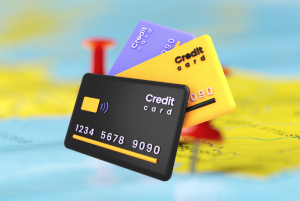In 2025, instant digital loans have become one of the most accessible financial solutions for consumers facing urgent expenses. With just a few clicks, it is possible to borrow money directly through mobile apps or online platforms, avoiding traditional bureaucracy. The promise of speed and simplicity attracts millions, especially in situations where quick liquidity can make a significant difference in daily life.
At the same time, the rapid expansion of these services raises questions about transparency, interest rates, and long-term consequences. While many providers advertise fast approval and flexibility, consumers often overlook hidden fees or repayment traps. Understanding both the convenience and the risks of instant digital loans is essential for making responsible financial decisions in 2025.
How Instant Digital Loans Work

Instant loans are processed through automated algorithms that evaluate creditworthiness in seconds. Instead of lengthy forms or in-person interviews, the process is completed digitally, often requiring only identification and banking information. This innovation reduces barriers for individuals with limited access to traditional credit.
However, the speed of approval does not always guarantee fairness. Many platforms charge high interest rates to offset the risks of lending without extensive background checks. As a result, consumers who rely on instant digital loans may find themselves paying significantly more than expected if repayment terms are not carefully reviewed.
Benefits and Drawbacks for Consumers
Instant loans offer undeniable benefits, particularly for those needing emergency funds. They provide immediate access to money for medical bills, car repairs, or household needs. Digital availability also makes them highly inclusive, expanding financial services to underbanked populations in the US.
Yet the risks are equally relevant. Lack of regulation in some markets means that not all platforms operate with full transparency. Consumers may encounter unclear terms, aggressive collection practices, or data privacy concerns. Evaluating the pros and cons of instant digital loans helps balance convenience with security.
| Benefits | Drawbacks |
|---|---|
| Fast approval, often within minutes | High interest rates and hidden fees |
| Accessible through mobile and online platforms | Risk of over-indebtedness |
| Expands credit access to underserved groups | Limited consumer protections |
Best Ways to Use Instant Loans Responsibly
Borrowers can minimize risks by adopting smart practices when using digital credit. This includes careful planning, clear evaluation of repayment capacity, and comparison of offers from different providers. These habits ensure that instant digital loans remain a tool of support rather than a financial burden.
- Compare at least three platforms before applying.
- Calculate total repayment cost, not just monthly installments.
- Avoid using instant loans for discretionary or luxury spending.
- Prioritize providers with transparent fees and strong consumer reviews.
By following these steps, borrowers align digital convenience with responsible money management practices. Awareness remains the most effective safeguard against the hidden pitfalls of fast but costly credit solutions.
Key factors for 2025
The role of instant digital loans in 2025 depends on how consumers adapt to financial innovations. Regulation is expected to tighten, pushing platforms toward greater transparency. Until then, individual responsibility remains the strongest shield.
Conclusion
Instant loans deliver speed and accessibility, qualities that resonate with modern lifestyles. For many households, they represent a lifeline during emergencies, bridging the gap between expenses and income without the delays of traditional banks.
However, their convenience cannot overshadow potential risks. The sustainability of instant digital loans relies on informed use, clear regulation, and consumer vigilance. In 2025, the challenge is not only accessing money instantly but doing so in a way that ensures long-term financial stability.



